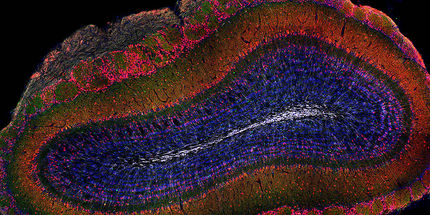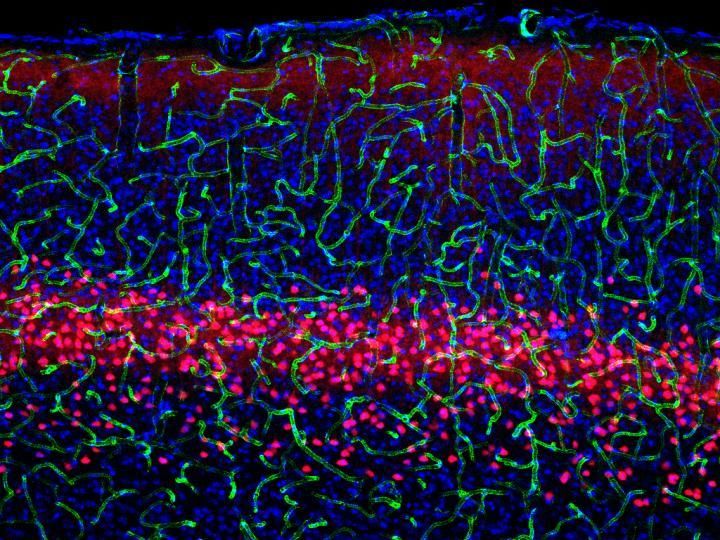See how they run: Study traces the neural wiring of a running mouse
Cornell researchers have identified a group of spinal cord nerve cells that manages running in mice. In the process they have illuminated an interesting step in mouse evolution: When you're being chased by a hawk, you're better off scampering than galloping, even though galloping is faster.
Described in Nature Communications, the research is part of an ongoing effort to learn more about locomotion in animals, essentially by creating a wiring diagram of the locomotor networks in the spinal cord, said Ronald Harris-Warrick, professor of neurobiology and behavior.
Walking and running share common but overlapping processes in most animals. Locomotion is controlled by a group of neurons called a "central pattern generator" (CPG). The brain says, "Go," and a sort of biological computer program fires motor neurons in the right sequence and intensity to put one foot in front of the other. When the brain says, "Go really fast!" the program modifies as different neurons join the locomotor network, this research suggests.
To overcome the challenges of observing neural activity in the mouse spinal cord, the researchers used various methods, including painstakingly inserting microscopic electrodes into single nerve cells and electrically stimulating nerves to simulate signals from the brain. They discovered a group of neurons called interneurons that fired only when signals from the brain called for higher speed.
"These neurons don't play much of a role in moving slowly," Harris-Warrick explained. "For that there are others we haven't discovered yet."
Normal mice running on a treadmill simply speed up their left-right motion to go faster. University of Chicago researchers recently created genetically modified mice that switch at higher speeds from left-right running to bounding, with the two front legs and two rear legs moving in synchrony. That's what most four-legged animals do, Harris-Warrick noted, but apparently for a small creature being chased by a lot of predators, evolution favored left-right running.
"Galloping is faster," he explained, "but if you're galloping, it's hard to turn on a dime. You trade speed for dexterity."
The high-speed neurons apparently activate a neuronal pathway that inhibits the bounding behavior, said the researchers. They showed that they could trigger the bounding gait by infusing the nerves with strychnine, which has the same inhibitory effect. "What this shows us is that the wiring is all there for a mouse to gallop, but these neurons are preventing the animal from galloping," Harris-Warrick said.
The two-phase approach to locomotion goes back much further in the evolutionary tree, the researchers noted. In part, their work was a confirmation in mice of research showing that in zebrafish, the activity of interneurons associated with higher swimming speeds is accompanied by weakening or silencing of other interneurons that were active at lower speeds. The high-speed system in zebrafish changes the way the fish makes sharp "escape turns."
Most read news
Organizations
Other news from the department science

Get the life science industry in your inbox
By submitting this form you agree that LUMITOS AG will send you the newsletter(s) selected above by email. Your data will not be passed on to third parties. Your data will be stored and processed in accordance with our data protection regulations. LUMITOS may contact you by email for the purpose of advertising or market and opinion surveys. You can revoke your consent at any time without giving reasons to LUMITOS AG, Ernst-Augustin-Str. 2, 12489 Berlin, Germany or by e-mail at revoke@lumitos.com with effect for the future. In addition, each email contains a link to unsubscribe from the corresponding newsletter.






















































